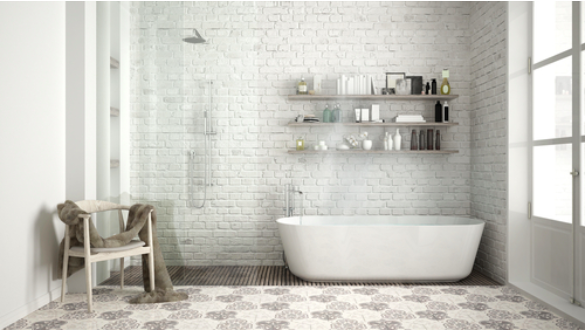How do you see your bathroom? Some of us look at this small but important room as a functional place where we wash; some view it as a peaceful sanctuary away from the rest of the world (even if we just end up having a quiet five minutes away from the family).
But there are others who may use it with trepidation, which might be caused by any one of a number of mobility issues due to illness or age. If this is the case for you or another family member, it might be time for you to think about making your bathroom more accessible.
There’s a wide variety of ways to reconfigure your bathroom so it’s better suited to your needs. Here are some of the options that might just be the perfect solution for you.
Table of Contents
Walk-In Showers and Wet Rooms
If you prefer to have a shower unit, there are many different models for walk-in showers from which to choose. Depending on your preference on style and practicality, you can have something that will suit your bathroom and the rest of your property. Many options can be installed in the space your bathtub already occupies with a shower tray, so may not need you to substantially reconfigure your bathroom.
For anyone who needs a shower without a step-in, or needs it to be easily accessible for wheelchair users, then a wet room could be the answer. It may mean some additional work (and cost). This is required because the walls and floor need to be waterproofed. However, it will be easier to clean.
Improving accessibility for walk-in showers and wet rooms will include adding bars for users to hold on to, plus seats to sit on while bathing. Your requirements can be discussed further with your bathroom installer.
Walk-In Baths
We don’t all see baths as just a way to wash ourselves: we also use it as a way to relax, or help us ease symptoms (such as muscle pain or cold/flu). But the joy of having a bath can be outweighed by the worry of slipping when getting in or out of the tub.
If you prefer to have a bath over a shower, then consider having a walk-in bath. Not only can it be swapped with your conventional bathtub, but there are many different types you could choose from depending on your needs.
All walk-in baths have an access door (usually to the side) for you to get into the tub. You can then either sit on the bath floor – as you would with a regular bathtub – or sit on a fixed or moveable seat, the latter helping you to get up or down in the bath.
As with walk-in showers and wet rooms, you can discuss any additions to aid mobility further in your bathroom with your installer.
What Next?
Find a bathroom installer who’s completed bathroom work for improved accessibility. You can then speak with them about what options are best for you, your budget, property and lifestyle.
















